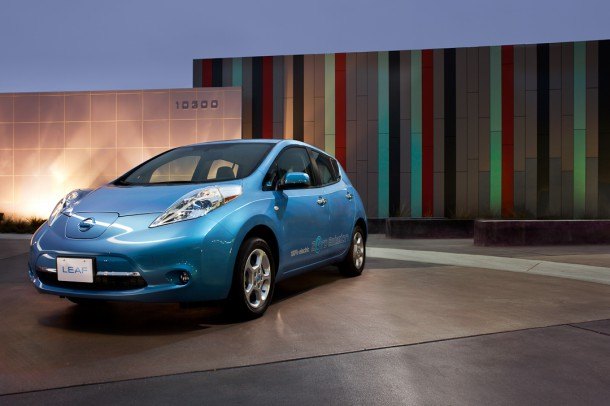Japan's Aging Population Boosting Demand For Autonomous Cars
Propelled by the fastest-aging nation in the world, there may soon come a day when senior motorists will find themselves behind the wheel ( or lack thereof) of a fully autonomous car.
According to Bloomberg, Japan’s aging population is spurring innovations in autonomous car technology based on a sobering statistic: 51 percent of traffic fatalities in the graying country come from drivers aged 65 and over, with no signs of slowing at the present as more motorists enter their golden and twilight years each passing day; by 2060, 40 percent of Japan’s population will be 65 and over.
Thus, a number of automakers — including Toyota, Nissan and General Motors — are doing all they can to introduce technologies that could, by 2020 at the earliest, lead to the first autonomous cars ready for sale.
What could this bring to senior motorists in Japan, the United States, and other graying nations down the road? Freedom, if Google’s Anthony Levandowski, one of the project leaders for the company’s own autonomous car project, has anything to say about it:
This technology restores the freedom that people can’t see. This system will drive old people to see their grandkids and see doctors.
While Levandowski and other autonomous evangelists spread their gospel throughout the industry, detractors such as BMW’s Klaus Kompass caution against having too much optimism about this brave new world, which he expects won’t appear before 2025:
We are always talking about, ’80 percent or 90 percent of accidents are caused by human error.’ Nobody is talking, surprisingly, about all the accidents that human drivers have avoided.
Back in Japan, however, at least one researcher hopes for the best, at least when it comes to his country’s graying road warriors:
“Zero fatalities is definitely a feasible target,” according to Kazunoba Nagaoka of the Institute for Traffic Accident Research and Data Analysis. “I would expect we can realize that by 2035.”
Photo credit: Nissan
Seattle-based writer, blogger, and photographer for many a publication. Born in Louisville. Raised in Kansas. Where I lay my head is home.
More by Cameron Aubernon
Latest Car Reviews
Read moreLatest Product Reviews
Read moreRecent Comments
- ToolGuy 9 miles a day for 20 years. You didn't drive it, why should I? 😉
- Brian Uchida Laguna Seca, corkscrew, (drying track off in rental car prior to Superbike test session), at speed - turn 9 big Willow Springs racing a motorcycle,- at greater speed (but riding shotgun) - The Carrousel at Sears Point in a 1981 PA9 Osella 2 litre FIA racer with Eddie Lawson at the wheel! (apologies for not being brief!)
- Mister It wasn't helped any by the horrible fuel economy for what it was... something like 22mpg city, iirc.
- Lorenzo I shop for all-season tires that have good wet and dry pavement grip and use them year-round. Nothing works on black ice, and I stopped driving in snow long ago - I'll wait until the streets and highways are plowed, when all-seasons are good enough. After all, I don't live in Canada or deep in the snow zone.
- FormerFF I’m in Atlanta. The summers go on in April and come off in October. I have a Cayman that stays on summer tires year round and gets driven on winter days when the temperature gets above 45 F and it’s dry, which is usually at least once a week.

































Comments
Join the conversation
Japanese may dream big but it will not become the reality until Apple introduces iCar and iRobot no matter what Google tries to accomplish today. And then, 5 years later, Samsung will be finally able to copycat iCar using Google developed SW framework. Japanese companies will be left behind as usual because they did not want submit to Google but develop the SW themselves (remember i-mode?). There will be the new world order in the car production - people will change cars every 2 years with SW upgrades. The subscription model is the future of the car ownership. Batteries will last for two years too and will be non-replaceable.
I think this is good for older people especially in the US where mass transit is nonexistent in most places and once an older person loses the ability to drive they become immobile. This allows mobility for the older population. It is easy for those who are young to criticize and mock this technology when they do not have limited mobility. It is heartless and disrespectful to just say that when you get old and are not able to drive that you just need to die. You might not feel the same way when you get old.